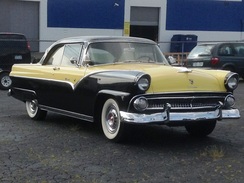 - Image © by Brian E. Faulkner -
- Image © by Brian E. Faulkner - It’s said that one man’s luxury is another man’s necessity.
I recall some years ago hearing of a serious music student who slept underneath a huge Steinway & Sons concert grand that barely fit into his Manhattan apartment, which otherwise was adorned with furnishings constructed from painted cinder blocks and cheap shelving. The 9-foot piano was not a luxury. It was a necessity, a critical key to furthering his career as a concert pianist.
“Luxury” gets sliced and diced any number of ways depending on how you view it. There are luxury homes, luxury cars, luxury wines and luxury vacations, some of which cost millions and others only hundreds. You might be able to afford a luxury cruise (short of commissioning your own yacht) but hard-pressed to spend more than your annual salary for a mid-sized Steinway to encourage your average 12-year-old to stick with her piano lessons – although during my time selling pianos, I have seen parents stretch to make that kind of purchase for their talented, truly dedicated offspring. I would classify these folks as need-based buyers. At the same time, I’ve also seen want-based buyers purchase expensive instruments to set in their living rooms. Though they didn’t play a note, the piano matched their furniture and the brand name on its fallboard spoke eloquently of their luxurious lifestyle.
The notion of luxury gets tangled up somewhere between need and want. Some things are luxurious because we can’t afford them but want them, while other things are luxurious because we want them and can afford them.
Around the cusp of the 20th century, an American economist named Thorstein Veblen observed in Theory of the Leisure Class that the demand for certain commodities was proportional to their high price. In other words, if you really want some uber-expensive indulgence, you’ll gladly pay the price because it enhances your status in a conspicuous sort of way. At that level of net worth, of course, money isn't much of a problem, although these days a million doesn't go as far as it used to ... $100-million if you live in Manhattan.
Thus, Veblen goods.
At the other end of the luxury spectrum is what marketing consultant Pam Danziger has dubbed the HENRYs, the High-Earner-Not-Rich-Yet “mass segment of the affluent consumer market” with annual incomes of $100,000 to $250,000. Which means they’re doing better than nearly 80% of Americans. It’s these folks that Tim Cook & Company appears to be targeting with their Apple Watch and clever luxury launch. It will be interesting to see if Apple’s new entry into the watch marketing space can straddle the fence between need and want (especially among Millennials) while creating demand up and down the luxury ladder and dipping down into the middle class.
High end automakers like BMW and Mercedes-Benz have become adept in recent years at driving desire for their luxury brands down through the HENRYs to the middle class (Danziger’s middle class appears to top out at $99,999). Mercedes now offers the price-seductive CLA pegged right at the average outlay for a new car in the U.S. ($31,000), and BMW’s sporty new 2-series can be had for just a bit more.
Of course, today’s average new car is ludicrously luxurious compared to those of 60 years ago, which weren’t so well equipped – or efficient or safe. Back in 1955, a sparkling new Ford or Chevy cost under $2000 and probably didn’t have air conditioning or maybe even an automatic. But in those days the average American worker only took home $5,000. Today’s average salary is more than ten times that, although it’s interesting to note that the average new car costs less relative to income (36% of the average salary now vs. 55% sixty years ago).
 - Image © by Brian E. Faulkner -
- Image © by Brian E. Faulkner - So thanks a lot, Thorstein Veblen!
Content © by Brian E. Faulkner

 RSS Feed
RSS Feed